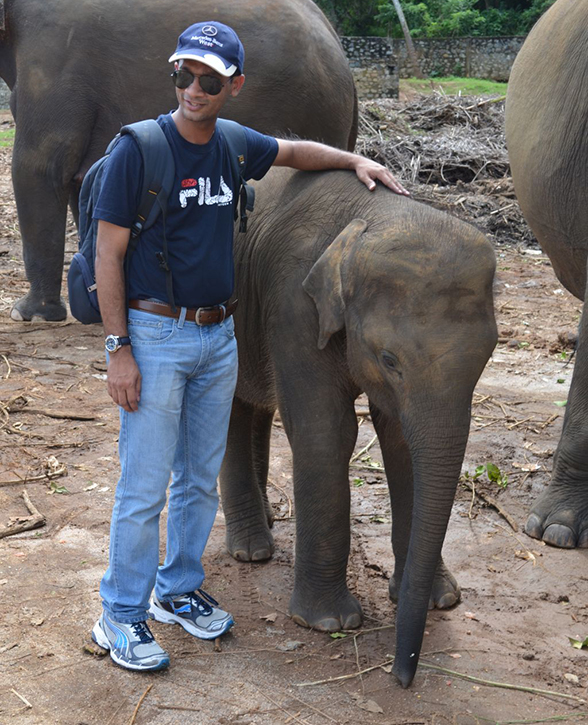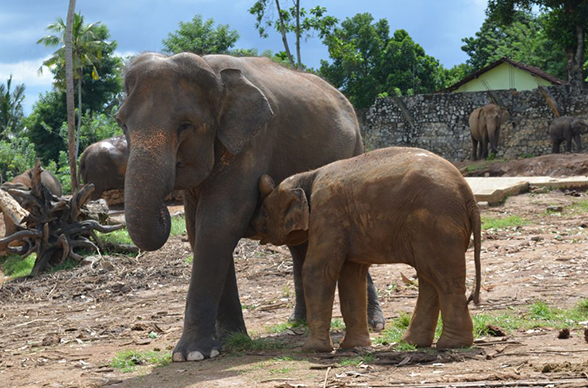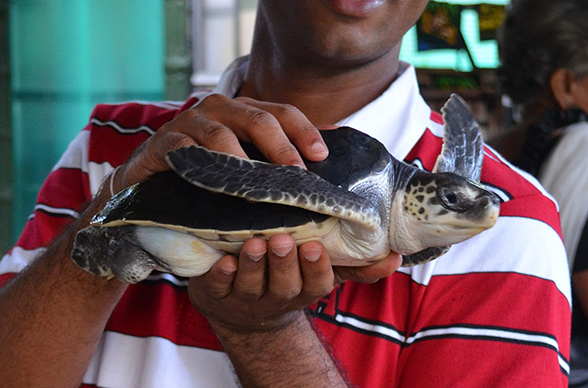Hope this holiday season you are planning to go somewhere off the beaten track and discover some exotic location. Years ago, I had been to Sri Lanka and discovered two of the most endearing wildlife locales. Both the places opened my eyes to a whole new way of understanding wild animals and preserve them. I had visited them way back in 2005 and I had nearly forgotten about them. A recent visit by my friends, the Tendulkar twins refreshed my memories.

Elephant Orphanage
One was the Pinnawala (or Pinnawela) Elephant Orphanage located on the Colombo-Kandy A1 highway. We do not associate the word ‘orphanage’ for an elephant! How can such a large pachyderm be an orphan, right? However, due to massive human exploitation of the wild habitat, even some large animals get lost from their herd. Baby elephants lose their mothers due to poaching, domestication or habitat loss. Whenever, such orphaned wild elephant calves are found wandering in the forests, they are usually taken care by the forest department in an ad hoc manner. The Sri Lankan Department of Wildlife Conservation made special efforts to provide care and sanctuary for orphaned baby elephants by setting up the Pinnawala Elephant Orphanage in 1975.
Located at the Pinnawala village in the district of Kegalla at a distance of 90kms from Colombo, the orphanage began taking care of just five calves and has now grown enormously to provide shelter for 88 elephants. It is truly a delight to see the elephants undergo their daily routine of feeding, bathing and walking exercises. Tourists from all over the world come to see these lovable creatures and feed them. It is really endearing to touch those friendly yet naughty baby elephants that keep pushing you to feed them!

Tourists visiting the Pinnawala Elephant Orphanage must not miss the daily bath routine done at 10am in the morning and 4pm in the evening. It is a delightful scene to watch the baby elephants frolicking in the waters of the Maha Oya River along with other older elephants. However, visitors must note that most of the elephants there are now in their adulthood and there is a separate fee for feeding them.
Turtle Hatcheries
Another wonderful nature preserve to be seen is the turtle hatcheries near to southern coastal city of Galle in Srilanka. Sea turtles are large marine animals which come to the shore for breeding. Sea turtles prefer quiet, dark, undisturbed sandy beaches to lay their eggs so that their hatchlings will be less vulnerable to predators. However, as expected human activities intervene in this natural cycle of egg laying and hatchlings returning to the sea.

While in India, our activists continue talking about the habitat destruction of turtle egg laying beaches, Sri Lanka has taken the lead in preserving the turtles through hatcheries. The turtle hatcheries on the Colombo-Galle highway is the most well known. The Wild Life Protection Society of Sri Lanka established the hatchery in 1981 to protect the country’s turtles from extinction.
Olive Ridley turtle, the Leatherback, the Hawksbill, the Loggerhead and the Green Turtle are the five species of marine turtles that visit the beaches of Sri Lanka for nesting. While most of these turtles visit specific beaches in southern Sri Lanka, the Olive Ridley turtles are the only species that nest everywhere. There are 18 hatcheries found along the southern Sri Lankan coastal line; of them, nine hatcheries are found in the district of Galle. Kosgoda and Induruwa are the most prominent turtle hatcheries.

The hatchery pays fishermen for eggs that they collect at night along sandy beaches. Visitors can see large water tanks filled with new born turtle hatchlings. After being fed for a few days, the baby turtles are released in the sea, usually during the safer hours of darkness. Although October to April is the main egg laying season, some eggs can be found at Kosgoda throughout the year.
Visitors are allowed to touch and handle the turtles and hatchlings, which gives them an idea how nature’s delicate balance is being preserved. Obviously, tourists are given strict instructions not to harm these sensitive creatures. It is remarkable to see how Sri Lankans understood the value of preserving wildlife as well as make it a sustainable eco-tourism activity. I wonder when our Indian environmentalists will realize that nature can be preserved in a commercially beneficial manner!
Pics – Ashish & Sameer Tendulkar
– Factfile –
http://www.elephant.se
http://www.lanka.com
http://en.wikipedia.org
http://www.induruwabeachresort.com
http://en.wikipedia.org
http://www.tripadvisor.co.uk
http://in.linkedin.com





